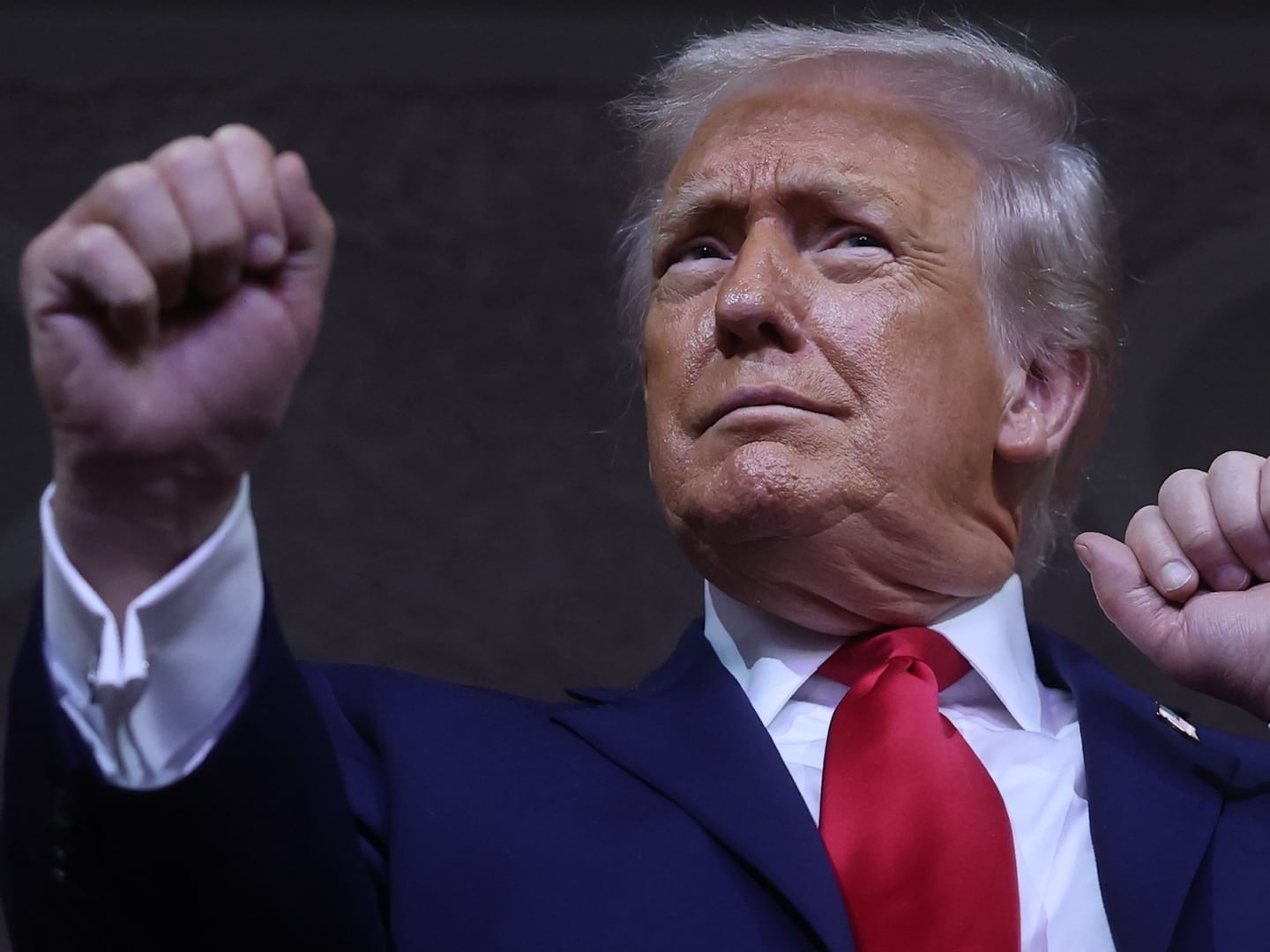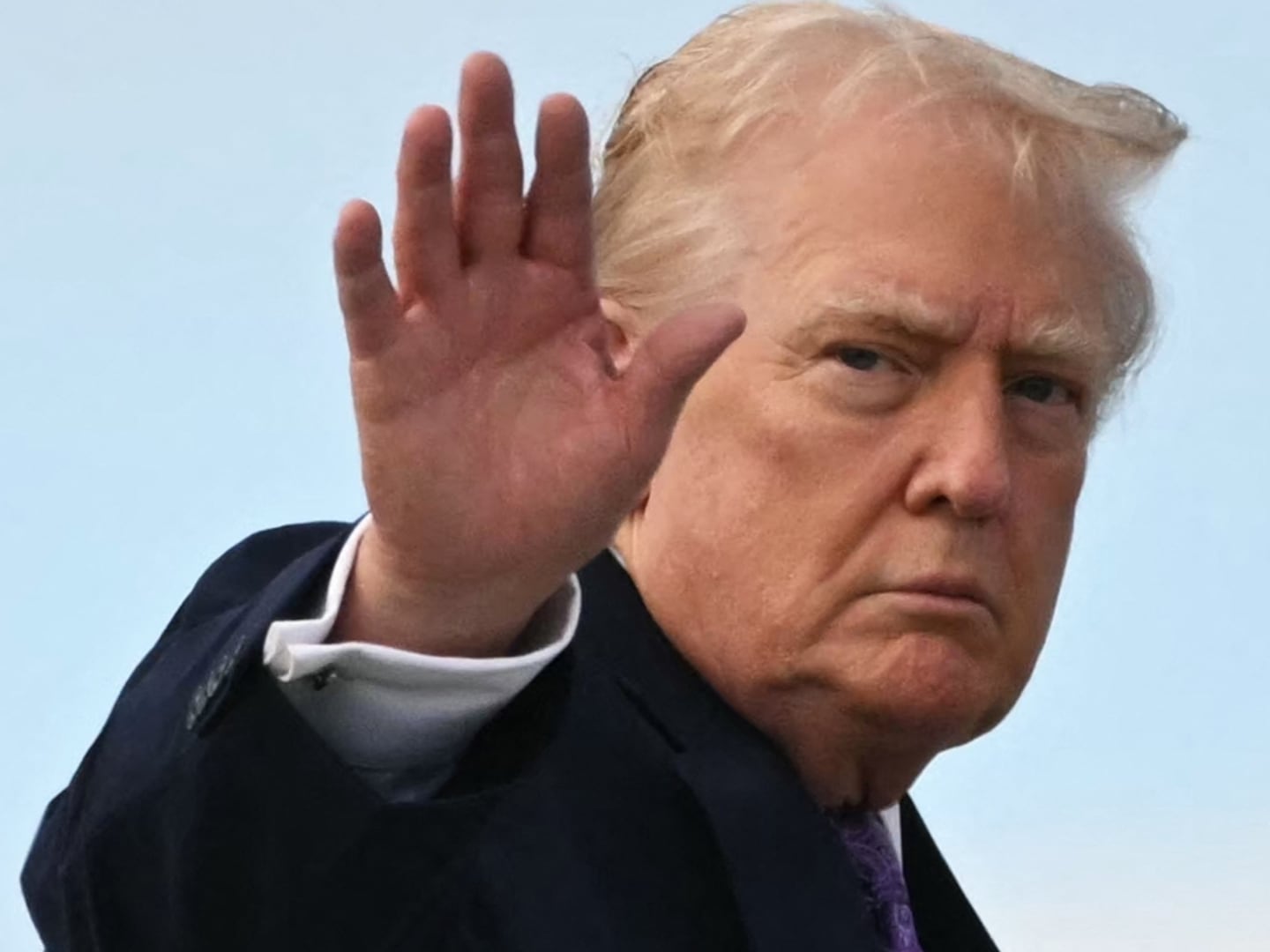It was meant to have been a slick and serious technological operation, linking a witness in Colorado with jurors in Florida considering the case against accused murderer George Zimmerman.

Instead the hearing in courtroom 5D at Sanford County circuit court erupted into titters and the sound of embarrassed squirming as pranksters interrupted the testimony of Prof. Scott Pleasants, pelting him with calls as he attempted to testify via Skype about the educational background of Trayvon Martin’s killer.
The result was a series of bloops and pings that rendered an impossible distraction and threw pop-ups all over the screen on which Pleasants—who led a course in criminal investigation at Seminole community dollege that Zimmerman joined in summer 2011—was being watched by jurors.
“Salman Talpur calling,” read the first of the pop-ups, after Pleasants’s Skype user information was shown on national television during his broadcast testimony. “Marcus calling,” came another.
Judge Debra Nelson pursed her lips, unamused. Prosecutor Richard Mantei rolled his eyes and grinned sheepishly. Defense attorney Mark O’Mara screwed up his face. The victim’s father sat coolly chewing gum. Jurors looked baffled. And Salman Talpur, the mysterious Marcus, and other practical jokers persisted, leaving a giggling Pleasants shaking his head as he tried in vain to press the “decline” option to dismiss the ever-quickening pace of incoming calls jamming his line.
“I gotta tell you, there’s now a really good chance we’re being toyed with,” noted O’Mara sagely, ultimately switching to a cellphone link to complete his cross-examination after an exasperated Judge Nelson ordered the Skype link’s termination.
It was the most notable moment of levity in an otherwise sombertrial since prosecution witness Rachel Jeantel—a scowling, eye-rolling witness given to truculence and street slang—referred to follically challenged prosecutor Bernie de la Rionda as “the bald-headed dude” during her turn on the stand in week one.
In more grim testimony Wednesday, Amy Siewert, a forensic technician with the Florida Department of Law Enforcement, wielded the Kel Tec 9mm semiautomatic pistol that Zimmerman used to fire a single, fatal bullet into Martin’s chest. The teenager’s hoodie sweatshirt, arms pinned akimbo and with a bloodstain over the heart, was also shown to the court.
Zimmerman, 29, is charged with second-degree murder in the February 26, 2012, shooting of Trayvon Martin, an unarmed 17-year-old student whom he mistakenly profiled as a “suspicious person” and followed as the teenager walked to his father’s girlfriend’s home in a gated community in Sanford. Martin had just taken a trip to a convenience store for a bag of Skittles candy and a can of drink.
The defendant, a neighborhood-watch captain, has pleaded not guilty, arguing that he shot in self-defense after Martin leaped on him and pounded his head on the ground. The prosecution, however, has attempted to paint a picture to jurors of Zimmerman as a wannabe cop—a tag lawyers are banned from using in court—with a history of overzealous vigilantism who wove a “tangled web of lies” to justify his actions.
Among those lies, prosecution evidence has suggested, was Zimmerman’s claim on a Fox television interview he gave weeks after the incident that he knew nothing about Florida’s “stand your ground” law, a controversial defense that allows anyone in reasonable fear of their life to fight back with deadly force instead of retreating.
In testimony Wednesday, Prof. Alexis Carter—who taught criminal litigation at Seminole community college in 2010, in which Zimmerman, one of his students, earned an A grade—said the “stand your ground” law was a frequently discussed topic in his course.
“You always kind of remember your smartest student or the one that stands out the most ... He was probably one of the better students in the class,” Carter testified, nodding toward Zimmerman. “How are you doing?” he called out to the defendant from the witness stand, giving a cheery wave as Zimmerman rose to acknowledge him and nodded back.
Zimmerman had also requested an opportunity to ride along as an observer with Sanford police in March 2010, the court heard from the police department’s administrative-services manager, Jim Krzenski. Listing the reason for his request, Zimmerman had written on his application form: “solidifying my chances of a career in law enforcement.”
Judge Nelson has allowed evidence of Zimmerman’s criminal-justice studies and interest in becoming a police officer into evidence, despite protests from O’Mara that it could be detrimental to his defense.
“This is not some Johnny-come-lately to this idea,” said Mantei during legal arguments, held without the jury present, over Zimmerman’s penchant for law-enforcement matters.
“This is a person who decided that he not only wants to do this, but he wants to receive a degree in it—and there’s nothing wrong with that, but it tells us something about his state of mind when he encountered this ... ‘suspicious person.’”
The initial refusal by Sanford police to arrest and charge Zimmerman led to a civil-rights outcry in the days and weeks after the shooting. Martin’s parents, whose campaign for a prosecution ultimately moved Florida Gov. Rick Scott to appoint a special prosecutor who reviewed the case and charged Zimmerman, have been in court throughout the trial, but left briefly when photographs of their son’s body were shown on day two.
In testimony Tuesday, Jacksonville medical examiner Valerie Rao—who reviewed video and photographs of Zimmerman’s injuries for the prosecution—told the court that his wounds were inconsistent with his claim that he killed in self-defense and while fearing for his life as Martin slammed his head repeatedly on the concrete.
“The injuries are so minor, and to me, slamming implies great force,” Rao said, describing the wounds as “not life-threatening, very insignificant,” and consistent with only a single impact.
Under cross-examination, however, she ceded to O’Mara’s suggestion that multiple blows were “possible,” but added that such a scenario was not her opinion. Grazes on Martin’s knuckles, she also admitted, were consistent with the victim having thrown a punch.
The case continues.






